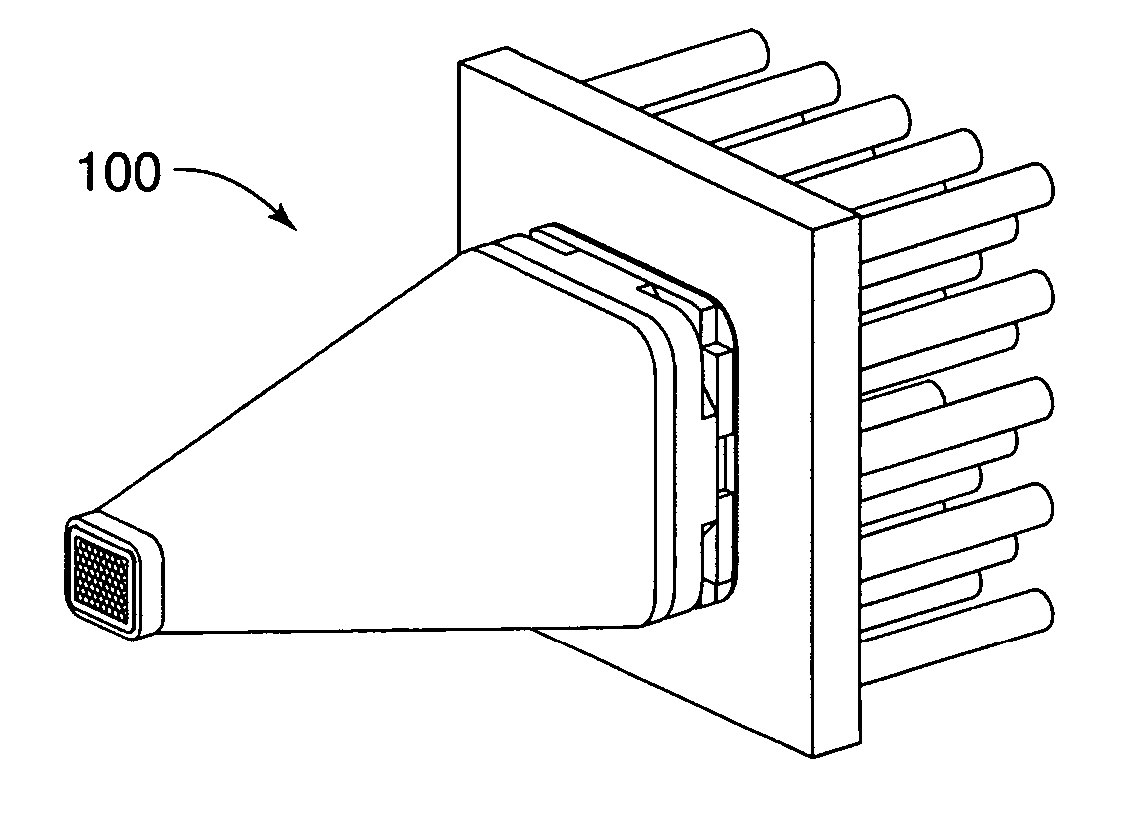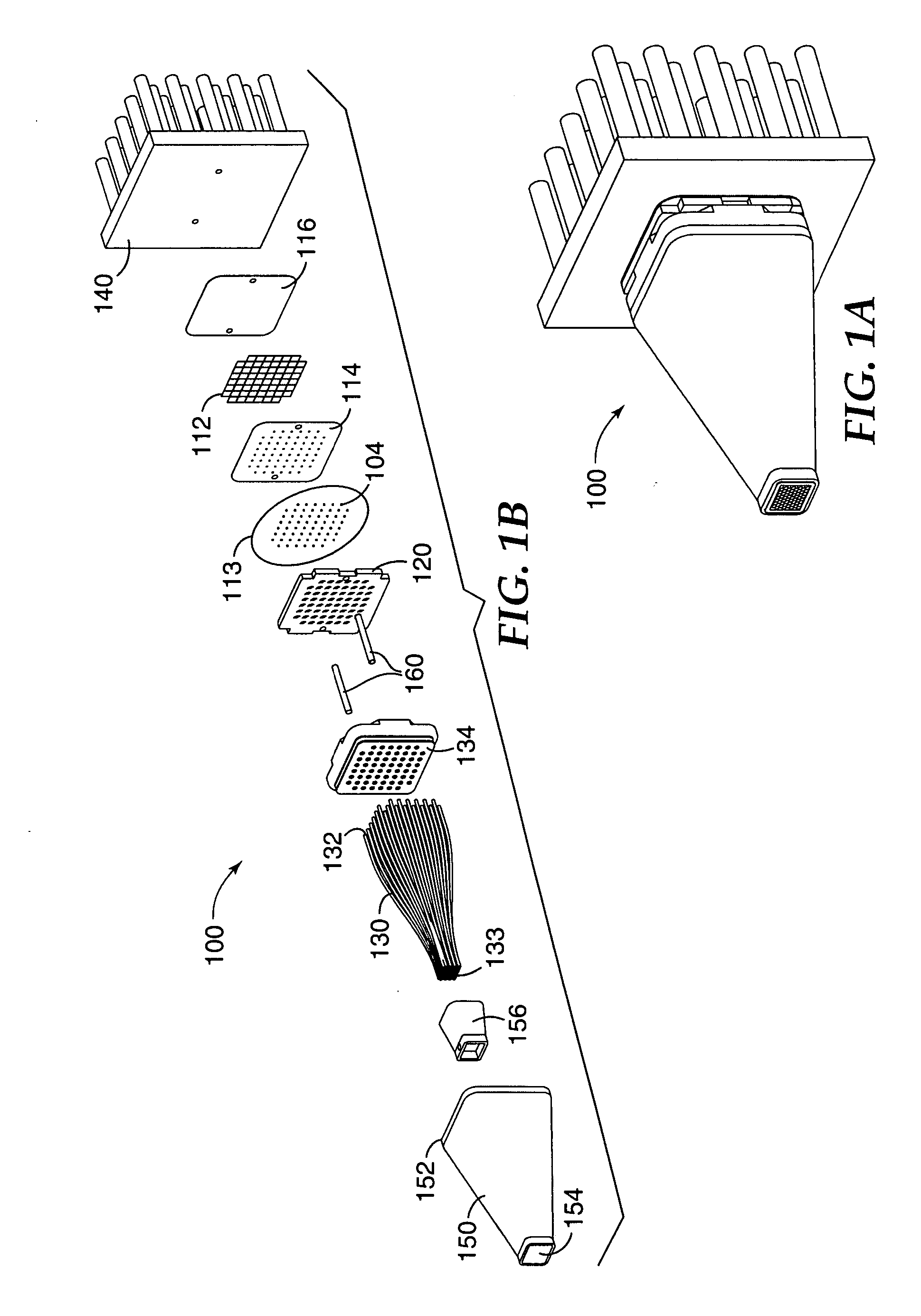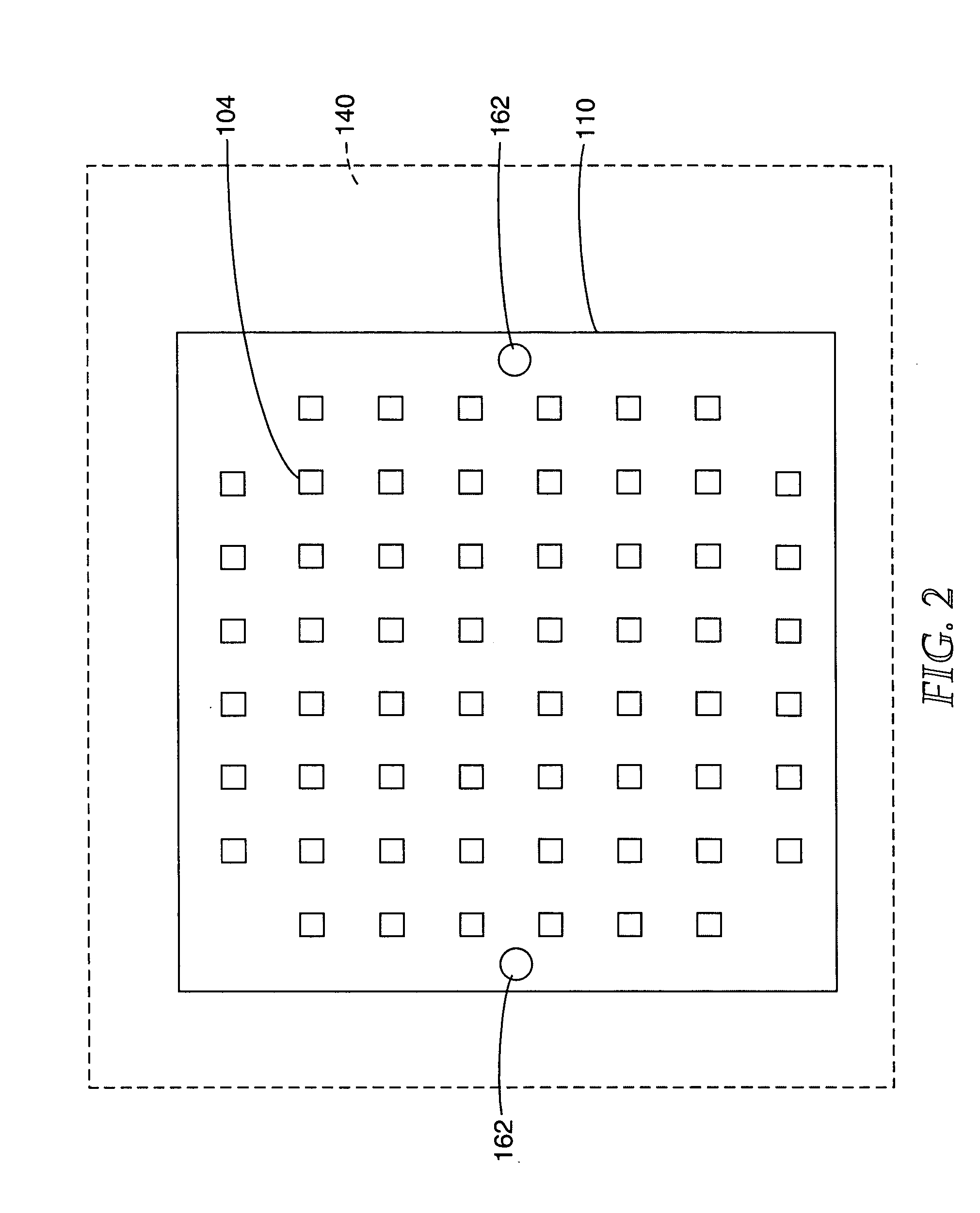LED curing apparatus and method
a curing apparatus and curing system technology, applied in the field of curing apparatus, system and method, can solve the problems of shortening the emission wavelength, requiring the use of expensive and complicated heat transfer systems, and reducing the irradiance and lifetime quickly
- Summary
- Abstract
- Description
- Claims
- Application Information
AI Technical Summary
Benefits of technology
Problems solved by technology
Method used
Image
Examples
Embodiment Construction
[0030]FIG. 1A shows a solid state light device 100 (also referred to herein as an illumination device or photon emitting device) in an exemplary configuration. Light device 100 is shown in an exploded view in FIG. 1B. By “light” it is meant electromagnetic radiation having a wavelength in the ultraviolet, visible, and / or infrared portion of the electromagnetic spectrum. In the construction described below, the light device 100 can have an overall compact size comparable to that of a conventional High Intensity Discharge (HID) bulb, thus providing a replacement for a discharge lamp device in various applications including road illumination, spot lighting, back lighting, image projection and radiation activated curing.
[0031] Light device 100 comprises an array of solid state radiation sources 104 to generate radiation. The radiation is collected and concentrated by a corresponding array of optical concentrators 120. The concentrated radiation is then launched into a corresponding arr...
PUM
 Login to View More
Login to View More Abstract
Description
Claims
Application Information
 Login to View More
Login to View More - R&D
- Intellectual Property
- Life Sciences
- Materials
- Tech Scout
- Unparalleled Data Quality
- Higher Quality Content
- 60% Fewer Hallucinations
Browse by: Latest US Patents, China's latest patents, Technical Efficacy Thesaurus, Application Domain, Technology Topic, Popular Technical Reports.
© 2025 PatSnap. All rights reserved.Legal|Privacy policy|Modern Slavery Act Transparency Statement|Sitemap|About US| Contact US: help@patsnap.com



